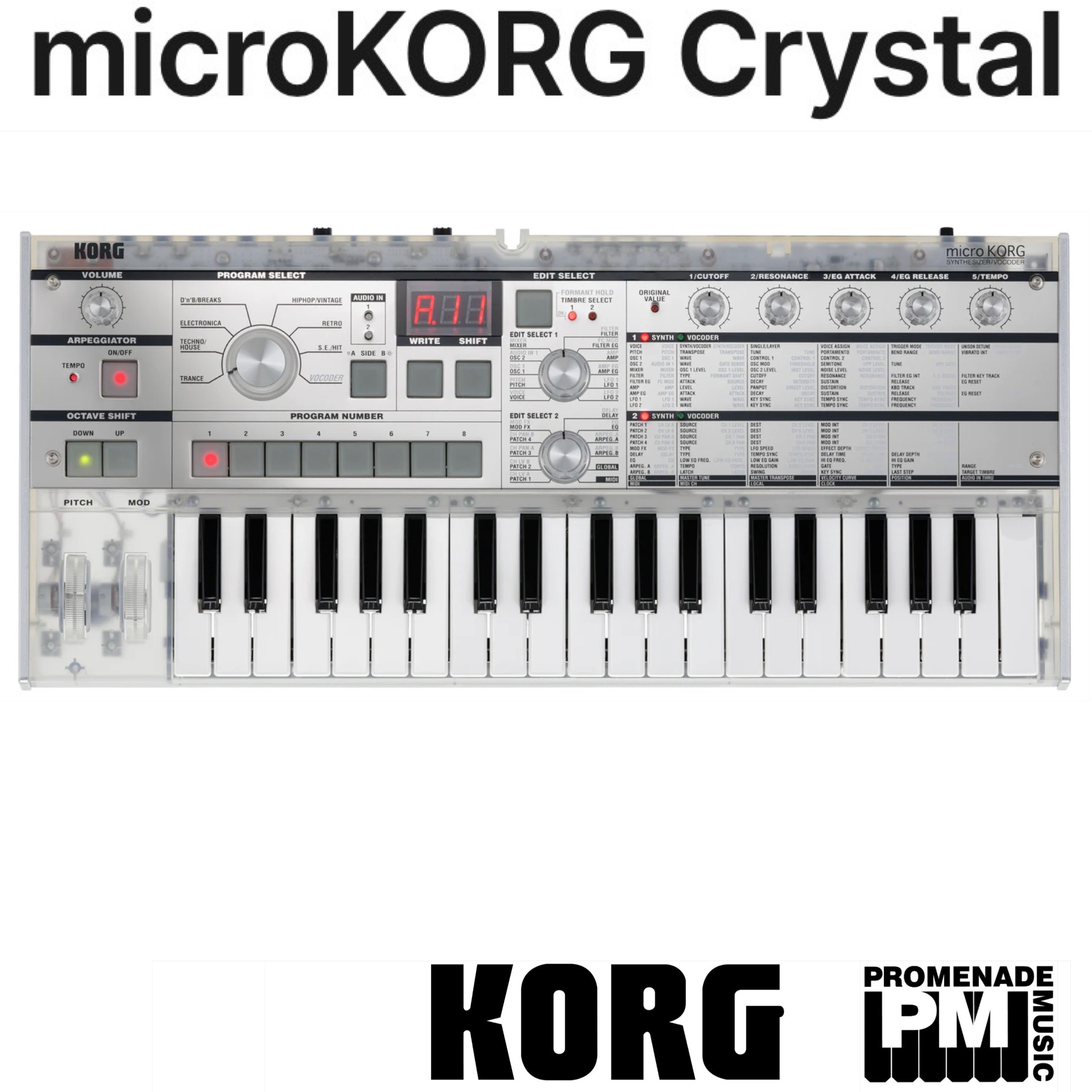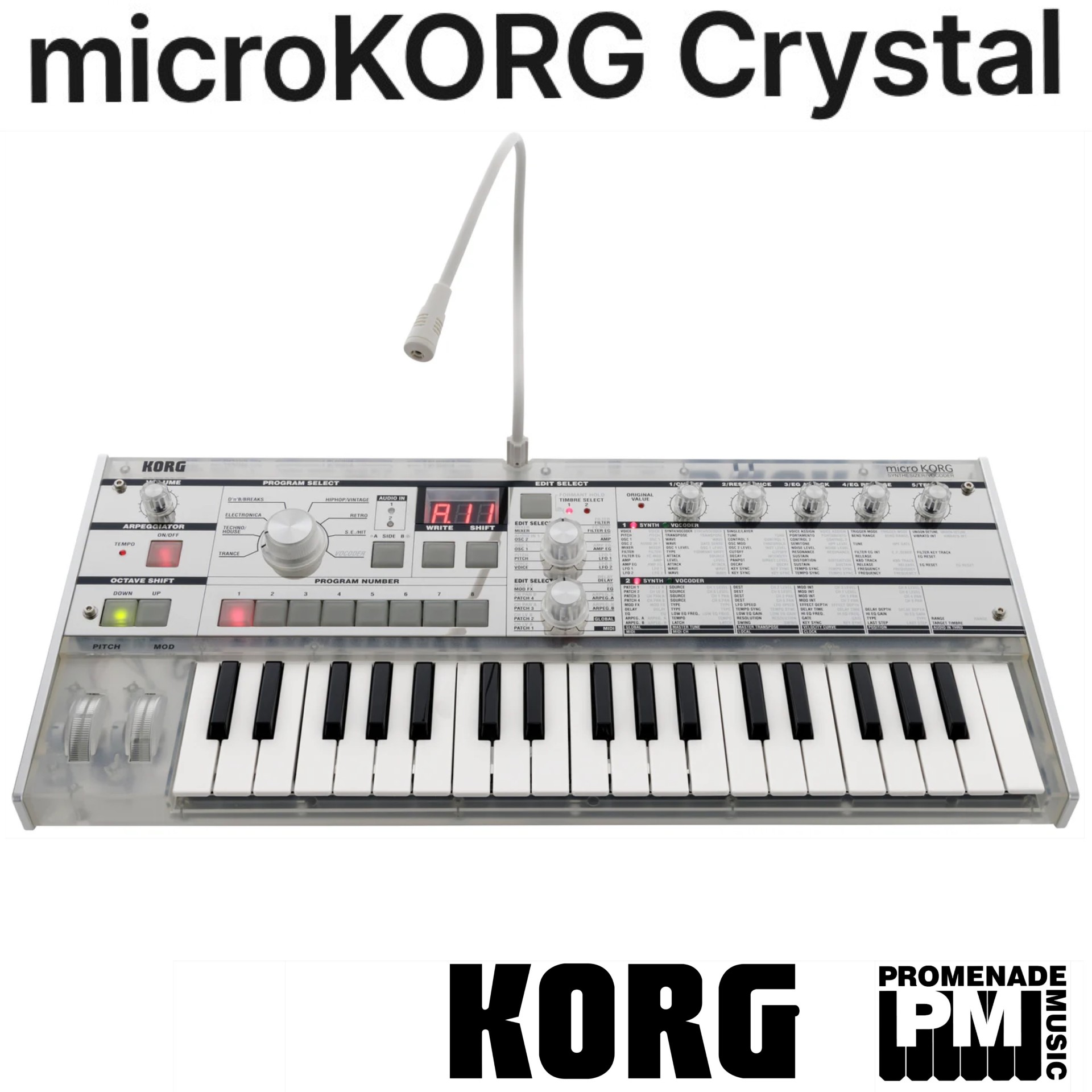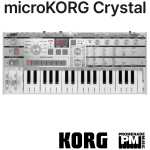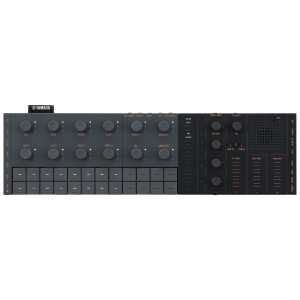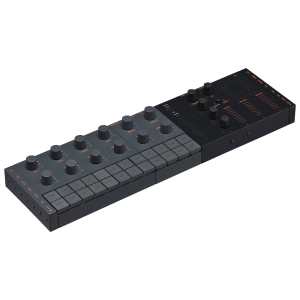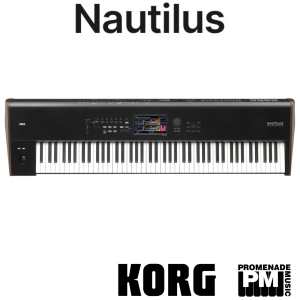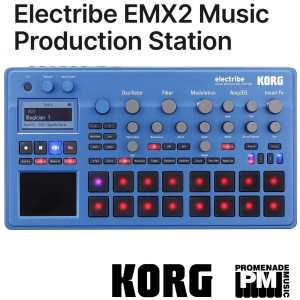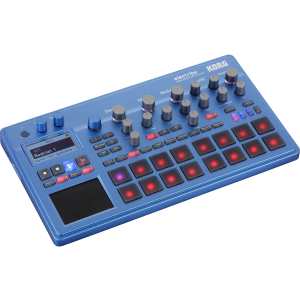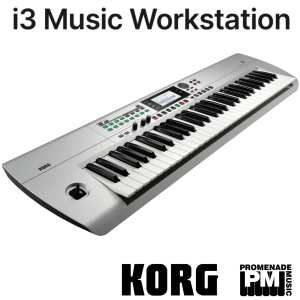The microkorg was an instant hit when it came out in 2002. 21 years later, it’s still selling, and still being used by countless bands, electronic artist and more.
To commemorate this, Korg are releasing a shiny version with brushed aluminium and transparent plastic, with a free transparent gig bag.
A shining homage to two decades of microKORG legacy
The microKORG was originally released in 2002 and has remained strong for two decades.
Countless tracks and artists have made use of the amazing possibilities it offers and it continues to be one of the most popular choices for musicians on stage and in the studio
Overview
Two decades ago, the portable, battery powered microKORG was born with a radical new micro-keybed, a powerful Vocoder and ready-to-use sounds ideal for contemporary genres delivering countless hit performances, and instantly
revolutionising the way musicians played. This compact sound monster introduced synthesis to a vast number of non-keyboard playing musicians and created a way of making music we now take for granted: a small keyboard resting unassumingly
atop a larger one onstage, made for use by hobbyists and pros alike and finding itself front and centre of studios worldwide from the smallest bedroom to the largest pro recording facility.
To celebrate the 20th anniversary of its release, the special edition microKORG
Crystal offers a unique and stunningly stylish take on this beloved synth – now a classic in its own right.
The instruments that musicians recognise as “classics” are those that are loved and always in use, regardless of times and trends. The word “classic” symbolises musical instruments that are revolutionary in their field.
There may be imitations of a classic, but the distinct character of the original shines more brilliantly and is only enhanced by time.
Highlights
A panel with a beautiful sheen
The microKORG Crystal features a stainless mirror-finish front panel that blends perfectly with the semi-translucent knobs and dials, blurring the limits between you and your instrument and providing a cosmetic impact
never seen in any other musical instrument.
“Skeleton” type semi-translucent chassis, with matching knobs and controls
Previously unchanged, the microKORG Crystal features a new take on the structure of the microKORG, with a semi-translucent chassis that lets you see the electronics and internals.
Even the controllers are semi-transparent, including the knobs, dials and wheels. As a commemorative model, the microKORG Crystal is great fun to look at from any angle, and as its name suggests, it “crystalizes” the
energy and feelings of the KORG team behind its birth.
The microKORG was originally released in 2002 and has remained strong for two decades.
Countless tracks and artists have made use of the amazing possibilities it offers and it continues to be one of the most popular choices for musicians on stage and in the studio. microKORG Crystal is the ultimate reincarnation of this iconic synth.
Aluminium side panels for a sturdy feel
The original microKORG featured wooden side panels that suggested a retro feel, serving as an elegant accent to the analogue modelled synth engine.
This new special microKORG features sleek aluminium side panels for a clean and depurated look.
Dedicated transparent carry bag
The microKORG Crystal features a stainless mirror-finish front panel that blends perfectly with the semi-translucent knobs and dials, blurring the limits between you and your instrument and providing a cosmetic impact
never seen in any other musical instrument.
Specifications
Sound generation
Analogue Modelling Synthesis System
Synthesizer program
Multi Timbral: 2 (max, Split/Dual Mode)
Voices: 4 voices
Sound source
2 Oscillator + Noise Generator
Multi Mode Filter (-24dB/octLPF,-12dB/oct LPF/BPF/HPF)
EG×2
LFO×2
Virtual Patch×4
Voices
4 voices
Vocoder program
Voices
4 voices
Sound source
1 Oscillator +Noise Generator
EG×1
LFO×2 8
Channels vocoder
Level and pan of each channel can be edited
Formant Shift function
Programs
128
Effects
Modulation effects (3 types), Delay (3 types), Equalizer
Arpeggiator
6 types
Controllers
Real-Time control knob X 4 (3 level Selection),
Arpeggio ON/OFF
Keyboard
37 Keys (mini-keyboard, keyboard has velocity)
Inputs
AUDIO IN 1,2, Level switch LINE/MIC, [AUDIO IN 1, 2
(LINE) ], [AUDIO IN 2 (MIC)]
Outputs
L/MONO, R, Headphones
MIDI
IN, OUT, THRU
Display
3 characters×1 line with 8 segment LED
Power supply
DC 9V (AC adapter)
Power
6.4w Max
Dimensions
524 x 232 x 70mm
Weight
2.4 kg (instrument only, without batteries or microphone)
Included items
AC adapter, condenser microphone, dedicated transparent
carry
The eagle-eyed among you will have noticed that there are 3 kinds of Korg MicroKorg’s available at the moment.
All of the microkorgs share a common thread – they are relatively affordable, portable, lightweight, can use batteries or a power supply, have a built-in vocoder, are hugely versatile over a number of styles and are very user-friendly. All of them are digital, but use high-quality analog-modelling to recreate analogue-type sounds.
The most common question is “what’s the difference?”
Well, the original, standard Microkorg was released 15 years ago and still going strong! It’s got very good quality analog-modelling sounds, and appeals to fans of a vast array of electronic music from a wide variety of genres. Whilst great for electronic music – all kinds of house, techno, EDM etc, it’s also been used in rock bands of all hues.
Next came the Microkorg XL. This was soon replaced by the current Microkorg XL+ (more or less the same, but with some tweaks). These models looks quite different, and have several new sounds (including piano) that the original doesn’t have. The overall layout was designed to appeal to players that weren’t necessarily from a synth-playing background, but wanted to use those kinds of sounds in a convenient, hands-on way. Another big difference is that the microphone input for the vocoder is and XLR input (much better quality than the mini-jack on the original version). And the gooseneck mic is also much better quality.
Finally, the Microkorg S is essentially the same kind of beast as the original Microkorg, but the main difference being that the ‘S’ stands for SPEAKERS. The other microkorgs require headphones or an external amp/speaker/PA etc. The new S version means that you can play at home, in your bedroom, in the tour van, back of the car etc – wherever inspiration takes you.
All of the microkorgs share a common thread – they are portable, lightweight, can use batteries or a power supply, have a built-in vocoder, are hugely versatile over a number of styles and are very user-friendly. All of them are digital, but use high-quality analog-modelling to recreate analogue-type sounds.
